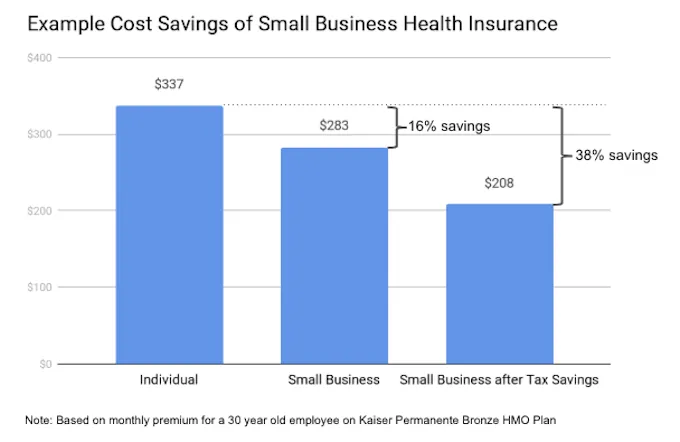Table of contents
You’ve probably heard the term “open enrollment” tossed around this time of year, and you might be wondering what you should do about it, if anything.
Open enrollment is the time when individuals can choose new health insurance for the coming year. It runs from November 1 to December 15 and coverage for plans selected during this time begins on January 1, 2019.
During open enrollment, individuals can go to an exchange like healthcare.gov, browse available plans, and sign up for one that meets their needs. But if a person works for a company that provides health insurance, they can make selections through their employer, often with significant tax savings opportunities (often up to 20–40 percent of the monthly premium).
You may wonder if you should provide employee health insurance through your business or let your employees sign up for individual plans through the government exchanges. There’s a lot to take into consideration, but understanding the differences between individual plans and small business plans can make the decision much easier.
How do you find a plan?
To shop individual and family plans, you can check out healthcare.gov. In some states you will be redirected to a state-based exchange. (In California, for example, you’ll be redirected to CoveredCA.)
To shop for a plan through your business, you can shop at SimplyInsured, or if you use Square Payroll, get an instant quote using the Benefits tab within Square Payroll.
When is the open enrollment period?
Open enrollment only applies if you’re opting for an individual plan, meaning you can only sign up for a plan between November 1 and December 15.
Your small business can sign up for small business health insurance through SimplyInsured at any time of year as there is no government-mandated open enrollment period.
What’s the cost difference?
Small business plans are typically about 10 percent cheaper than individual plans, but this varies based on your location. Small business plans are also tax deductible for both the employer and the employee, which can lead to another 20–40 percent in savings depending on your company’s tax situation.
On the other hand, if your annual income is less than $48,000 (see calculator below), you may qualify for government subsidies when purchasing individual insurance, which can dramatically reduce your cost. You can check to see if you or your employees qualify for subsidies using this ACA subsidy calendar.
What does carrier and network availability look like?
Since the launch of the Affordable Care Act (aka Obamacare), many insurers have stopped selling individual health insurance. In fact, last year 26 percent of Americans had only one carrier option on the individual market, and many carriers only offer HMO plans with small doctor networks.
Small business plans have more insurance carriers for you to choose from and provide access to PPO-style plans with larger doctor and hospital networks.
I’ve made a decision. What do I do next?
No matter what you decide, you should gather as many options as possible. Get an individual quote through healthcare.gov, and also get a small business quote through SimplyInsured. Health insurance can be confusing if you’re new to it — know your options and get the best coverage you can within your budget.
If you’re a Square Payroll user, be sure to check out the benefits page in your Square Dashboard, and SimplyInsured and Square will work together to make the process easy and painless. We’ll help you pick a plan and enroll your employees, and then keep all your deductions and contributions up to date automatically.
About SimplyInsured
SimplyInsured’s mission is to eliminate fear from health insurance for small business owners and their employees. SimplyInsured makes it easy to browse all available plans in your area, offer them to your employees, and sign up 100% online. You can also access SimplyInsured through Square Payroll’s Benefits tab. Once you enroll, there’s no extra work. We take care of enrolling your employees and syncing employer contributions and employee deductions with Square Payroll.
![]()












